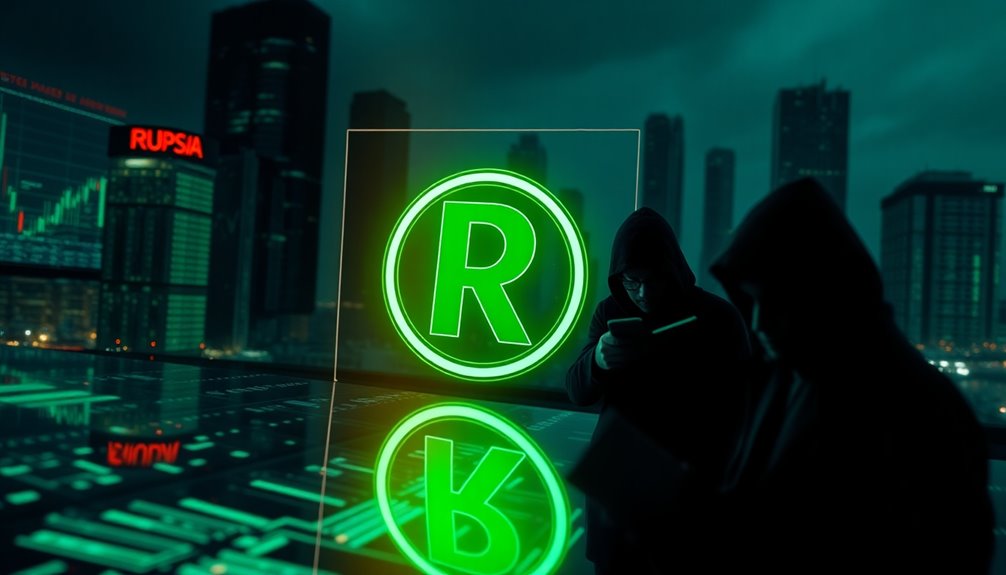You might find it intriguing that the Russian Digital Ruble, launched in August 2023, is viewed by many as a tool to sidestep international sanctions. With its blockchain foundation, it promises efficiency and transparency, but not without hurdles. Public skepticism and technical issues linger, raising questions about its true impact on global trade and sanctions. What does this mean for the future of international finance and Russia's position within it?

The Digital Ruble, Russia's central bank digital currency (CBDC), marks a significant shift in the nation's financial landscape. Launched on August 15, 2023, this digital currency aims to provide a modern alternative to cash and traditional bank transfers, with an exchange rate of 1:1 against the conventional ruble. Utilizing blockchain technology for secure transactions, the Digital Ruble represents the official currency of Russia, but it's more than just a digital version of what you're already familiar with.
One of the primary goals of introducing the Digital Ruble is to reduce Russia's dependence on the U.S. dollar, a strategy often referred to as de-dollarization. Given the increasing impact of international sanctions on the economy, the Digital Ruble serves as a tool for facilitating transactions that might otherwise be hindered by these restrictions. You might find it interesting that this digital currency is designed to withstand these sanctions, making it a critical component of Russia's financial resilience. Furthermore, the Digital Ruble was officially launched to enhance the country's financial system efficiency.
Transparency is another key feature of the Digital Ruble. With 100% transparency in state and municipal procurement, it promises to enhance trust in government transactions. As an individual or a business, you could potentially benefit from this increased visibility, knowing that funds are being utilized appropriately. Moreover, the digital currency aims to diversify Russia's banking sector, helping it adapt to various financial challenges. This diversification could lead to a more robust economy, which may ultimately benefit you as a consumer.
The implementation of the Digital Ruble began with a pilot program involving 12 banks, but there's a clear intention to expand this initiative. The Central Bank of Russia oversees its issuance and management, operating within a two-tier system where commercial banks act as intermediaries. This structure not only streamlines transactions but also enhances security, as wallets are managed securely by the Bank of Russia.
Despite its promising features, the Digital Ruble faces challenges. Public distrust and skepticism loom large, as many people are uncertain about the implications of adopting a digital currency. Technical difficulties, often exacerbated by technology-related sanctions, further complicate its development. However, the potential economic benefits, such as cost savings and improved efficiency, can't be overlooked.
Internationally, the Digital Ruble has garnered attention, especially from Western countries concerned about its potential to enable Russia to bypass sanctions. As you follow these developments, it's crucial to stay informed about how the Digital Ruble may reshape not just Russia's economy but also its global trading relationships.









